
If you are on the hunt for an incredibly deft blend of contemporary and traditional Islamic architecture, there is none better than the innovative plethora of the United Arab Emirates.
When it comes to Mosques, the room for innovation is a very challenging space. They come with a standard expectation built over the past 1400 years since Islam was established. And all of them, follow the "musts", and relish in the "mays", and are religiously obligated to stay away from the "don'ts".
In the "mays" is where the Mosques of UAE stand out. One after another, may it be in the richest areas of Dubai, or the slum of the deserted Ras Al Khaimah, you will certainly never see a Mosque any less than impressive.
This Masjid (Mosque in Arabic, and the more popular name) is in the capital, Abu Dhabi. The Sheikh Khalifa bin Zayed Al Nayhan Masjid instantly caught my eye, and why wouldn't it.
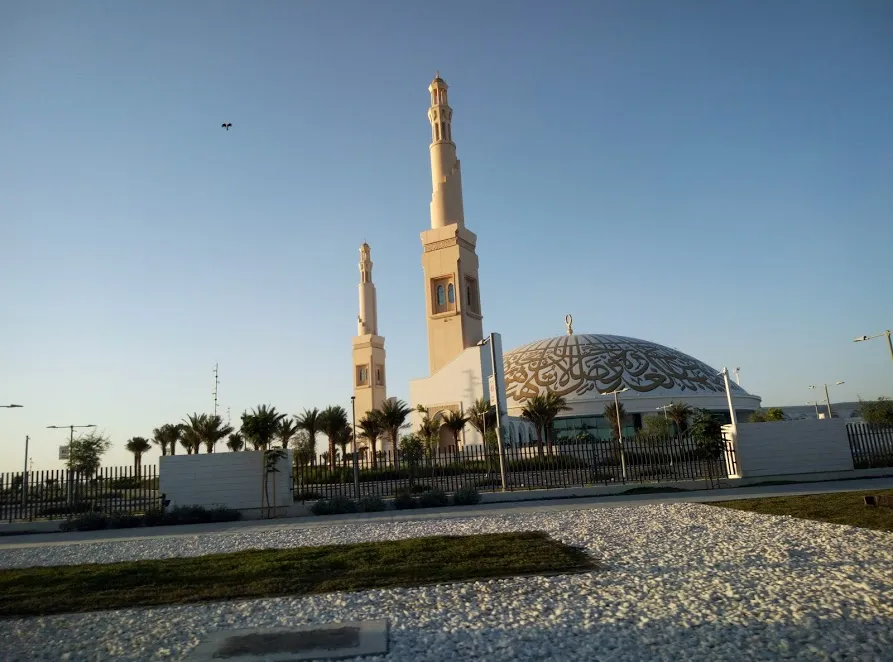
At first glance, it already meets the expectations. Upon laying eyes on it, you already know it is the Islamic prayer area or place of worship. It has the signature look to it. The two towers, and the giant dome.
In Islamic tradition, drawing pictures or caricatures is prohibited. And that is one of the limitations of Islamic architecture compared to the rest. However, it has been marvelously compensated, for years, through the rich tradition of calligraphy. The art of beautifully recreating scriptures in the most incredible designs.
The Shiekh Masjid signifies more than a place of worship. The rich golden calligraphy on the dome, with a contrasting and sober white. To me, it signifies the wealth and poshness of the capital of UAE, and the calm white colors signify the humble nature of the nation.
It is luxurious, yet controlled.
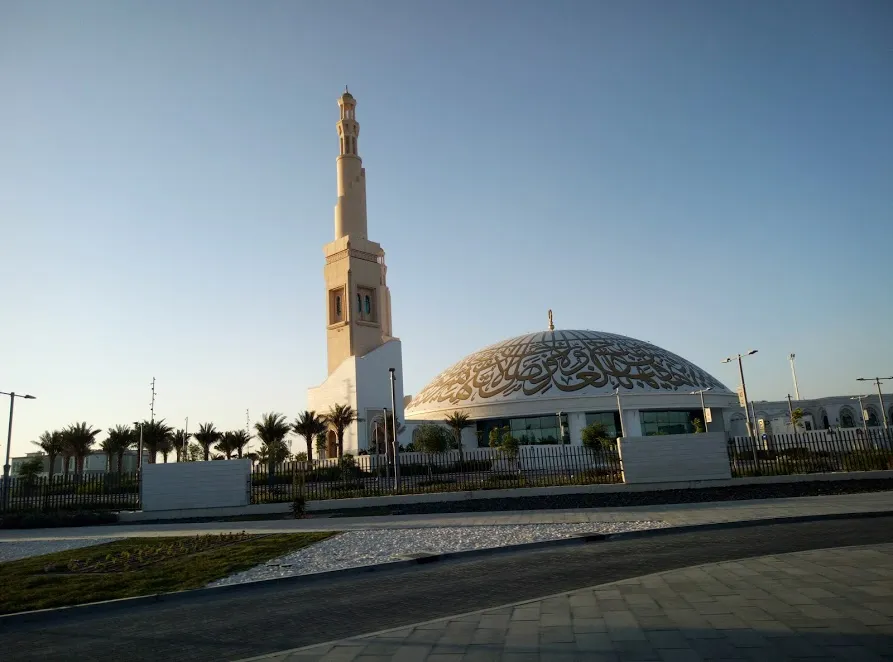
The golden minarets (towers) are yet another part of the "musts". Back in the day, they were used by the "mua'zzin" (the person who performs the call to prayer), to climb up in the air and call the people to the congregation. It has since become iconic and almost a compelled part of modern Islamic architecture.
Other than hanging speakers on the top, it is used as a landmark so the people looking for a Mosque can be guided to the Masjid by following the Minarets from afar.
However, this has given more space for innovation in the field of Islamic architecture. Minarets are like ornaments to the Masjids. They are designed, in this instance, with golden accents and a shiny dome at the top. Bringing more luxury to the Masjid.
Closing Thoughts.
I feel the Sheikh Khalifa bin Zayed Al Nahyan Masjid has successfully encapsulated the very essence of Abu Dhabi in the Masjid.
The color scheme and expensive calligraphy talent, the main attraction, portrays the illustrates wealth, luxury, and humbleness of the city. The calm colors of the entire structure
along with complex designs depicts the calmness and peace of living in UAE within the busy and challenging career-oriented lifestyle.
The greenery and trees signify the struggle UAE had to overcome to turn the barren desert land into a piece of heaven on earth. The slit cast-iron boundary walls give off a welcoming vibe, yet secured. Much like an open door vs. a closed-door when drawing a house. The open door means welcoming, and the closed doors mean the opposite.
I want to take you through a sedated example of UAE's bout to innovate the well-established norms of traditional Islamic architecture.
An architectural precedent that ticks the boxes of requirements and goes beyond that. Al Khatwar Mosque.
The Masjid is situated in a populated area of Sharjah. Right in the middle of the bustling city. The design blends well with the city, not standing as a distraction, but an addition.
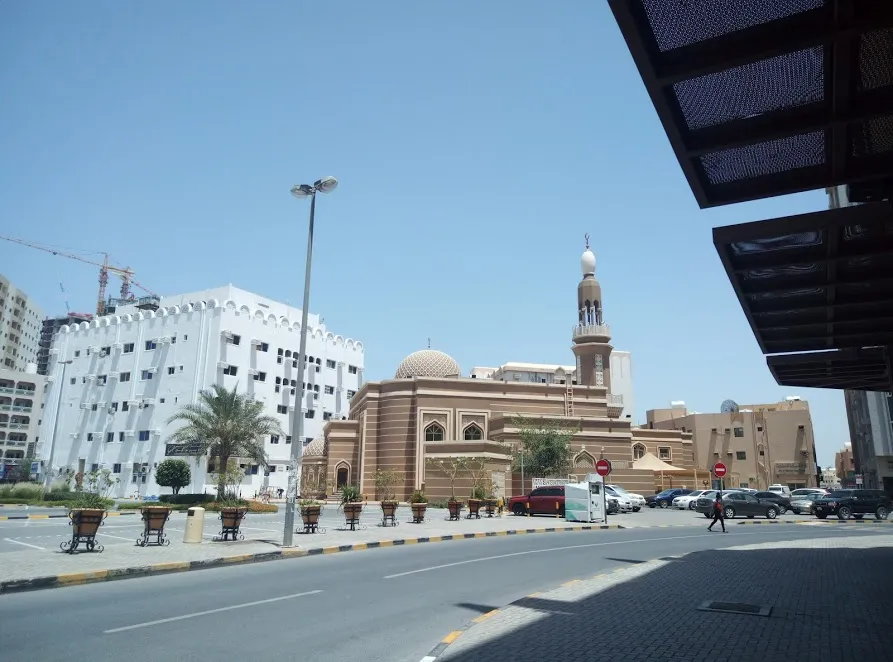
Masjids, traditionally, deny the orientation of buildings. They always point to the "Qibla" - which is Mecca. That is the direction the congregation faces while praying. The Al Khatwar Mosque blends well in the picture, the paint is unidirectional with surrounding establishments.
The location makes it a perfect residential Masjid. It boasts a parking lot and is right by the side of the walkway and a street that goes directly to the main road. This makes it exceptionally accessible.
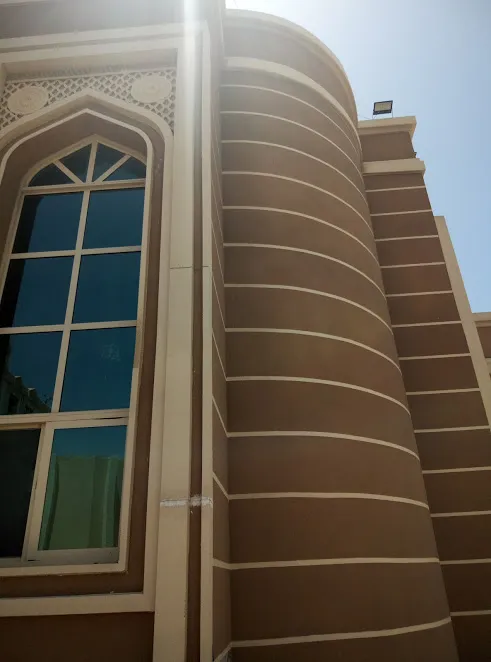
Albeit at the first glance it may come off as sober and blended, upon looking at closely, the extraordinary play of Islamic architecture blossoms.
The Masjid follows the traditional look - a Minaret and a dome. The bold groove lines are what catches the eye at first, and there is more to come.
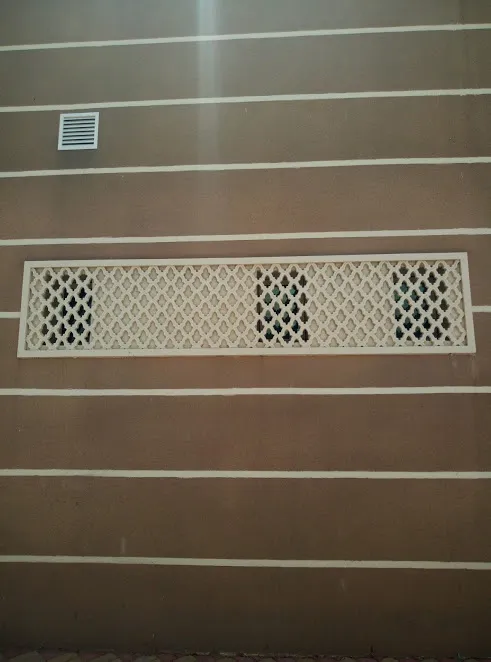
The Masjid follows the most common trend in the UAE. The main shape is rectangular, and more square layers are added to it. At a bird's eye view, it forms a multilayered structure, conjugated together. It creates a complexity worth appreciating.
The visual multilayered structure starts setting the Masjid apart from usual buildings to a powerful structure - almost as if giving it the spiritual weight that a Masjid carries.
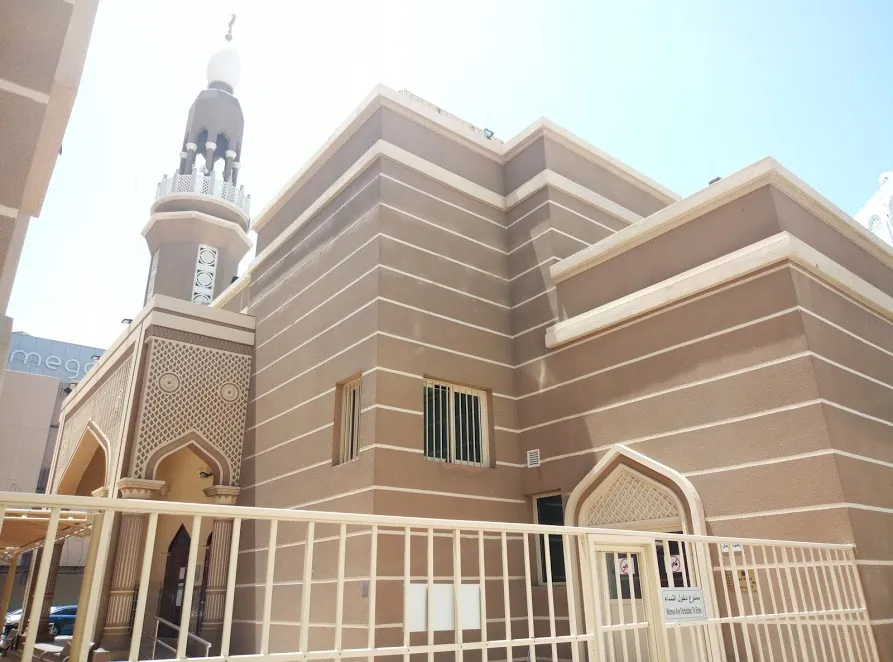
The geometric accents on the structure have become the most trending in the Islamic architecture of UAE. It can be found in libraries, museums, and Masjids across the country. The multilayering comes in handy since the main prayer hall is tall in height, and the other structures like toilets, ablution hall are much shorter in height.
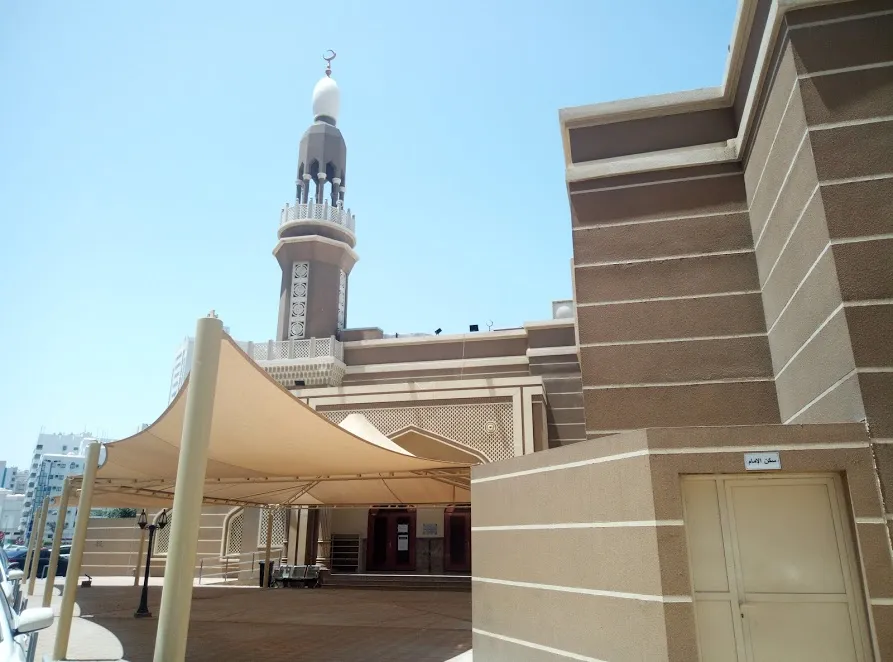
Al Khatwar Masjid has an overhead tent with steel columns to provide a shady space on the porch. This provides an escape to the worshippers from the harsh sunlight when the Masjid runs out of interior space. Almost every Masjid has this addition nowadays.
Albeit it doesn't fit in with the main theme of Masjid's design, it is a forced addition that is much needed.
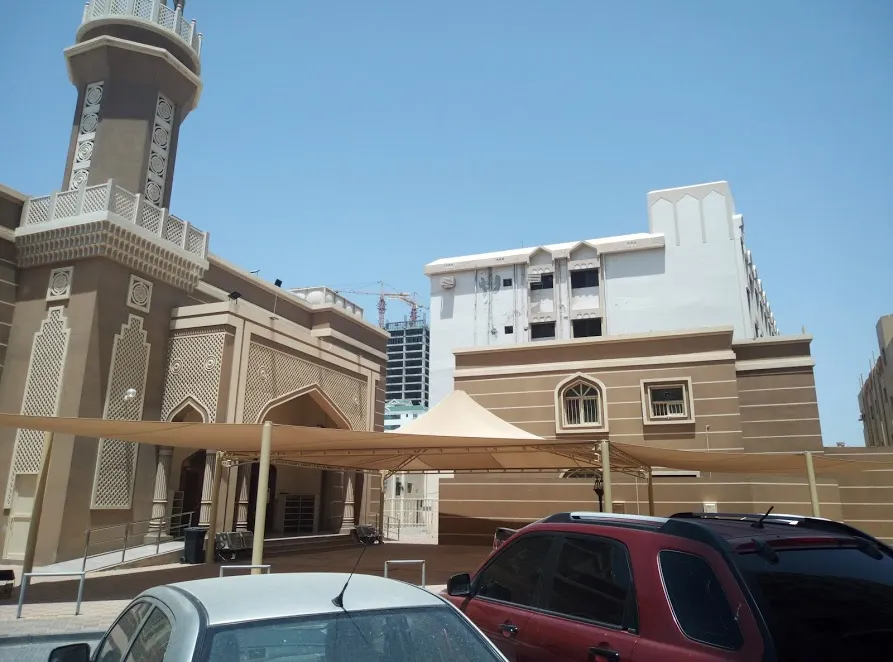
Nevertheless, the overhead tent is shaped like that to follow a specific pattern - Arabic. Instead of going with flat tin shades, the fabric overhead tent is cheaper, and the tent shape is very Arabic.
Another easily overlooked blend of function and design is camouflaged in the windows.
I have tried to take a picture that speaks for itself. While the geometric accents amplify the Islamic and Arabic inspirations, the hollowed windows play an important role in the harsh climate conditions.
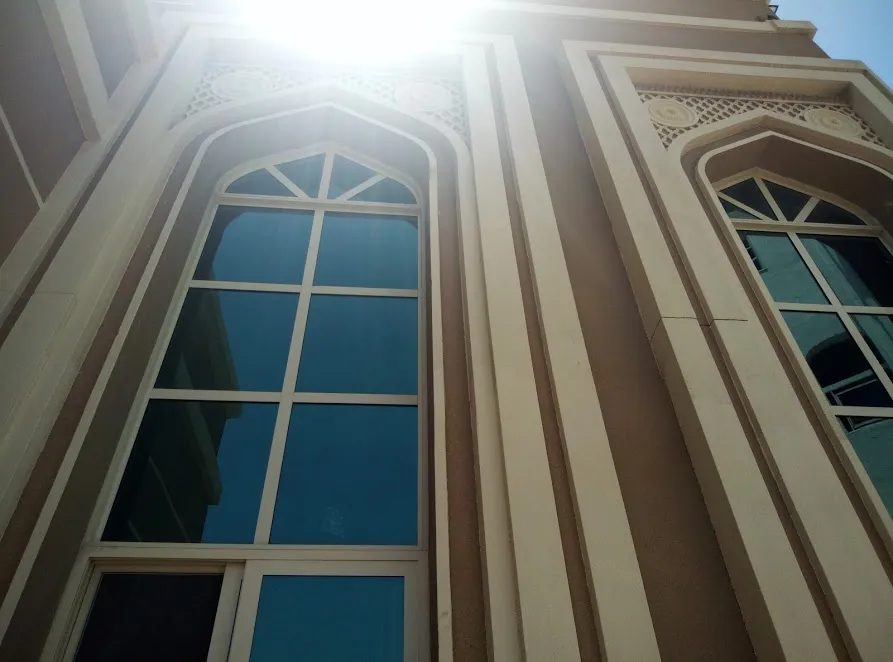
The windows are all tinted with reflective paper. This amplifies the poshness of the structure and saves the inside of the Masjid from the burning heat. The hollowed windows help to keep sun rays out and get as much shade as possible through the borders without adding extra shades that could potentially ruin the beauty of the overall architecture.

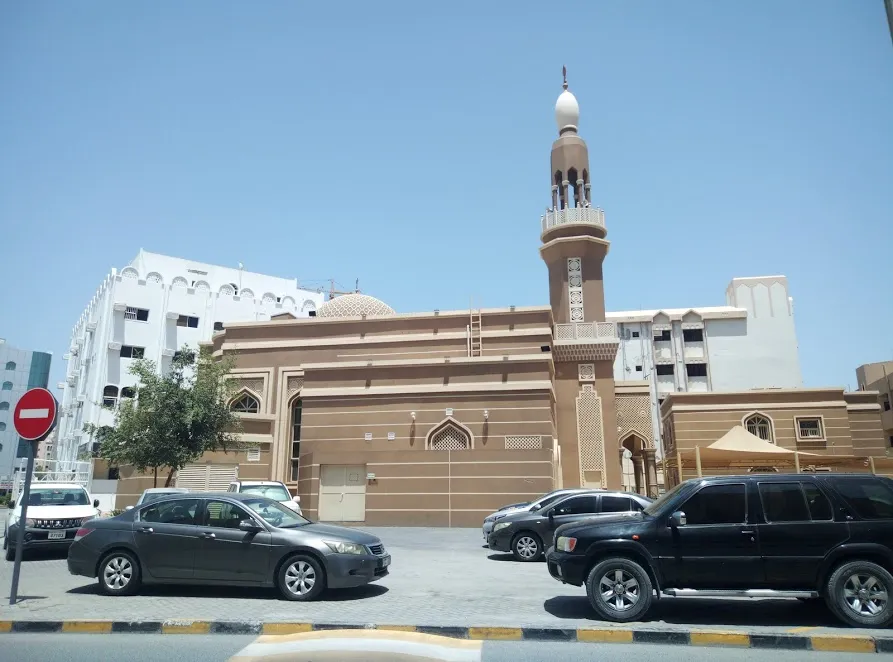
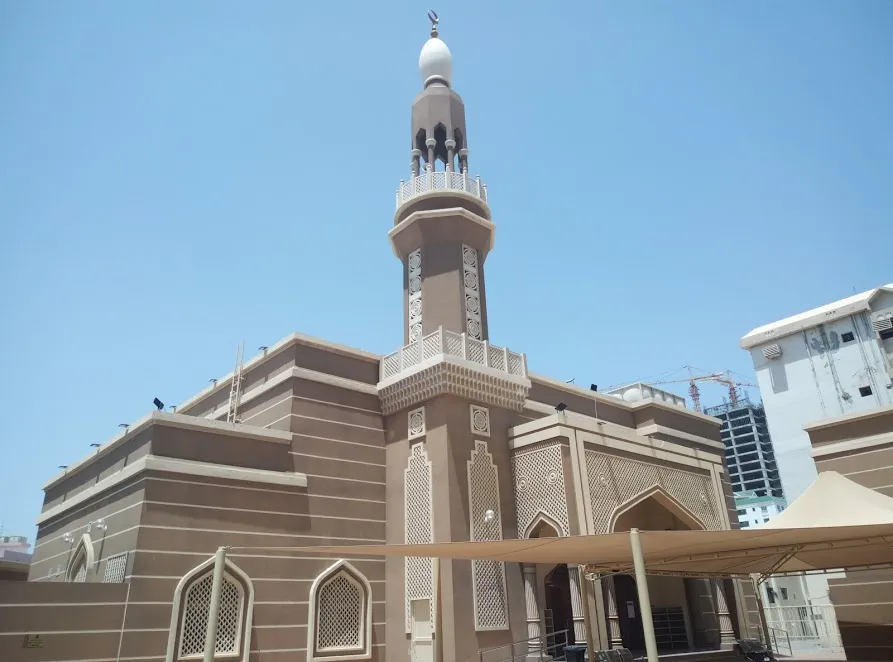
Closing thoughts
Al Khatwar Masjid is a prime symbol of traditional Mosque architecture done right in a city setting. It blends well with the surroundings but also pays due to the traditional requirements of building a Mosque.
The Masjid does not settle for average, it uses a perfect blend of function and Islamic design to make an outstanding statement for other projects to take lessons from.
The extravagant entrance with small calligraphy blobs and geometric designs, the bold grooves, the multilayers, the conjugation of supporting structures like toilets, water tanks, tech rooms, Imam house and more to the main structure, is done in an exemplary fashion.
Even the overhead shade follows the pattern.

Affiliate links
Huobi. Earn upto $170 with my link.
Appics
Splinterlands
Actifit
Bittrex
Binance
Ionomy
Cryptex
Uptrennd. Get 50 points with my link!

